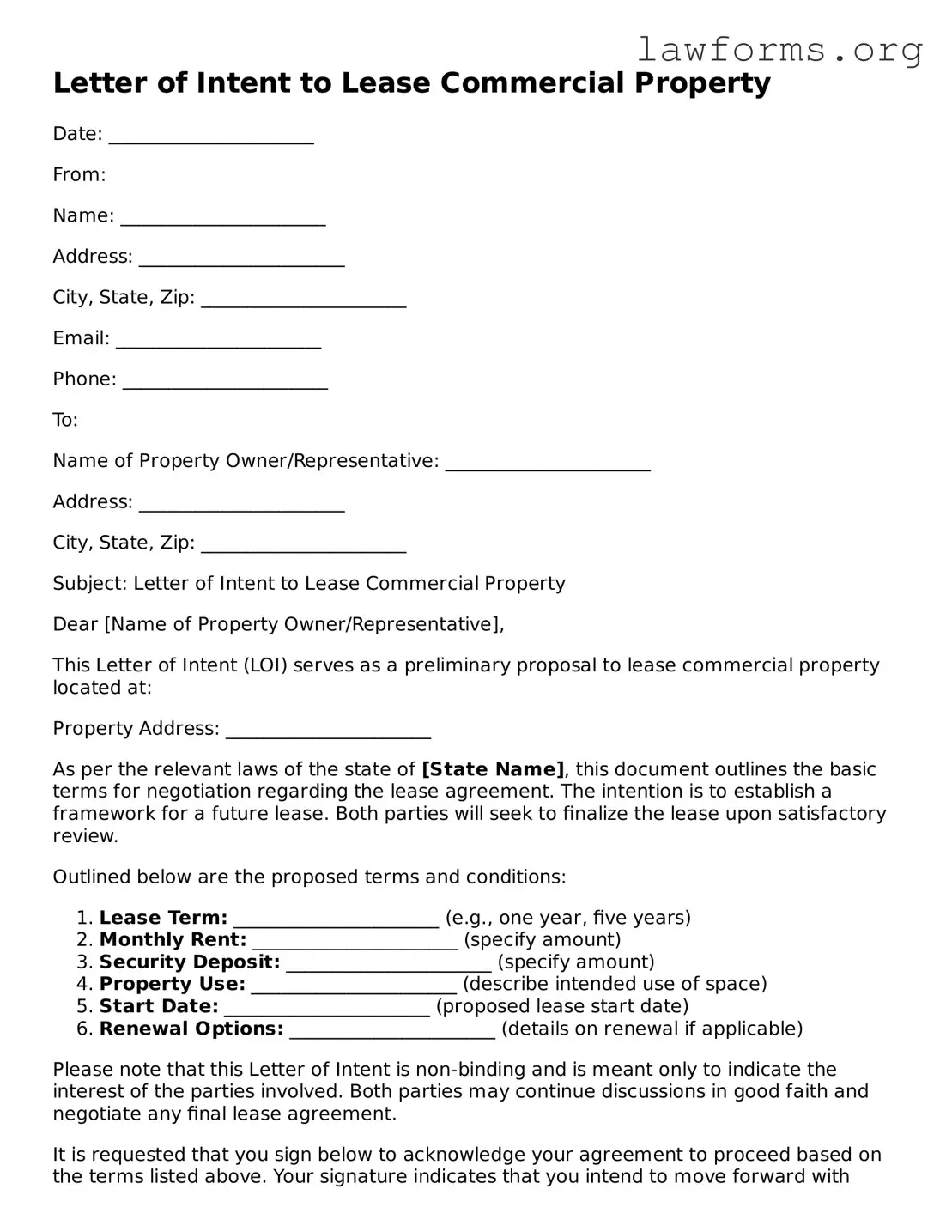Letter of Intent to Lease Commercial Property
Date: ______________________
From:
Name: ______________________
Address: ______________________
City, State, Zip: ______________________
Email: ______________________
Phone: ______________________
To:
Name of Property Owner/Representative: ______________________
Address: ______________________
City, State, Zip: ______________________
Subject: Letter of Intent to Lease Commercial Property
Dear [Name of Property Owner/Representative],
This Letter of Intent (LOI) serves as a preliminary proposal to lease commercial property located at:
Property Address: ______________________
As per the relevant laws of the state of [State Name], this document outlines the basic terms for negotiation regarding the lease agreement. The intention is to establish a framework for a future lease. Both parties will seek to finalize the lease upon satisfactory review.
Outlined below are the proposed terms and conditions:
- Lease Term: ______________________ (e.g., one year, five years)
- Monthly Rent: ______________________ (specify amount)
- Security Deposit: ______________________ (specify amount)
- Property Use: ______________________ (describe intended use of space)
- Start Date: ______________________ (proposed lease start date)
- Renewal Options: ______________________ (details on renewal if applicable)
Please note that this Letter of Intent is non-binding and is meant only to indicate the interest of the parties involved. Both parties may continue discussions in good faith and negotiate any final lease agreement.
It is requested that you sign below to acknowledge your agreement to proceed based on the terms listed above. Your signature indicates that you intend to move forward with discussions regarding a lease agreement for the specified commercial property.
Thank you for considering this Letter of Intent. We look forward to your favorable response.
Sincerely,
______________________
Agreed and Accepted by:
______________________
Name of Property Owner/Representative
Date: ______________________
